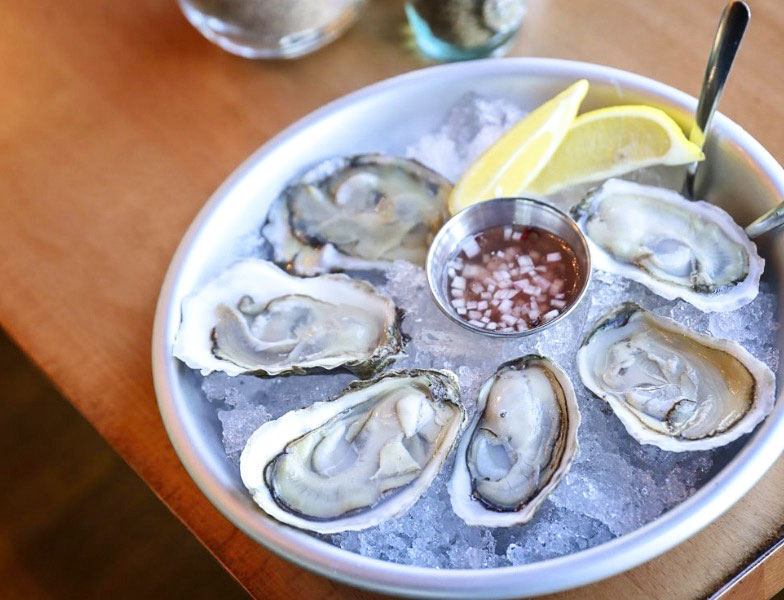Which seafood is best?

Oysters from Blue Island Oyster Bar and Seafood in Lone Tree and Cherry Creek are a good example of a seafood choice that is high in omega-3s, which are linked to many health benefits.
Summer and seafood go together. With the warmer days, lighter often cold fare is preferable. Even though we are land-locked in Colorado, we are lucky to have many seafood options. According to the National Library of Medicine, seafood provides an ideal package of nutrients, including high-quality protein, iodine, vitamin D and omega-3 fatty acids, which are incredibly important to brain, eye and heart health.
Several studies link omega-3 fish oil intake to a reduced risk of type 1 diabetes and several other autoimmune conditions, according to Healthline.com. However, the nutritional value and safety vary greatly among the many fish species — so how to choose which seafood is best?
The Environmental Working Group (EWG) provides an annual Good Seafood Guide based on collecting data from government organizations and independent institutions. The Guide is a resource to navigate which seafood species are best to eat, which are good to eat and which to avoid.
EWG’s best bets for seafood with very high omega-3s, low mercury and sustainability are wild salmon, sardines, mussels, rainbow trout and Atlantic mackerel.
Other good choices are oysters, anchovies, pollock/imitation crab and herring. These species have favorable concentrations of omega-3 fats, but do not necessarily come from sustainable sources.
Low in mercury but also low in omega-3s are shrimp, catfish, tilapia, clams and scallops.
The mercury exposure in “light tuna” (tuna that comes from skipjack or yellowfin tuna), albacore tuna, halibut, lobster, mahi mahi and sea bass can add up. These species contain too much mercury to safely be part of a regular diet for children or pregnant women.
EWG’s list of fish to avoid due to high mercury levels includes shark, swordfish, tilefish, king mackerel, marlin, orange roughy, and bluefin and bigeye tuna steaks or sushi. High-mercury seafood should never be eaten by children or pregnant women, according to EWG’s analysis and federal government warnings. Everyone else should eat these species infrequently or not at all.
EWG recommends enjoying seafood two to three meals per week. Beyond that amount, the beneficial effects of omega-3s subside and the risks posed by contaminants could add up. How much can be safely consumed depends on one’s age, weight and health status. Use EWG’s Seafood Calculator to gauge how often each can be eaten and to explore healthier options, or talk to a healthcare provider.
Resident Sean Huggard, owner of Blue Island Oyster Bar and Seafood and Oliver’s Italian restaurants, added, “When choosing a restaurant for seafood, fish or oysters, always look for one that puts a focus on those items and doesn’t make them an afterthought.”
For more information, visit ewg.org/consumer-guides/ewgs-consumer-guide-seafood. Visit www.seafoodwatch.org for Monterey Bay Aquarium’s Guide for sustainability ratings.
By Lisa Nicklanovich; photo courtesy of Blue Island Oyster Bar